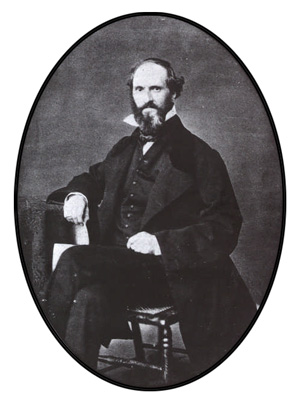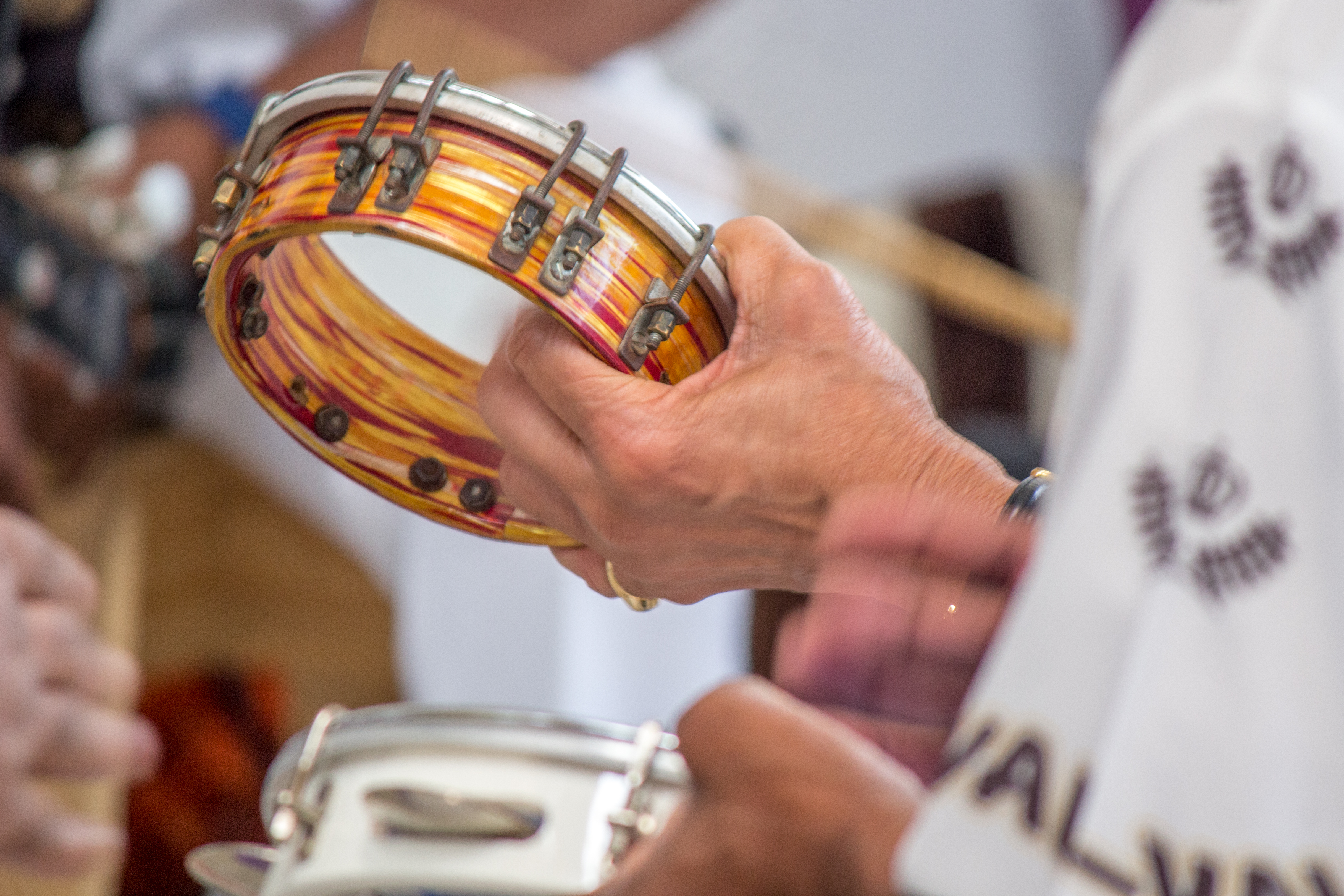|
Uirapuru (Villa-Lobos)
''Uirapuru'' (subtitled ''O passarinho encantado'', “The Enchanted Little Bird”) is a symphonic poem or ballet by the Brazilian composer Heitor Villa-Lobos, begun as a revision of an earlier work in 1917 and completed in 1934. A recording conducted by the composer lasts 20 minutes and 33 seconds. History ''Uirapuru'' originated as a fifteen-minute symphonic poem titled ''Tédio de alvorada'' (Boredom at Dawn), composed in Rio de Janeiro in 1916 and first performed there on a concert sponsored by the for the benefit of retired journalists, at the Theatro Municipal on 15 May 1918 by an orchestra made up of 85 music teachers, conducted by Soriano Robert. Villa-Lobos extensively reworked and expanded this composition into the score retitled ''Uirapuru'', beginning in 1917. However, it was not until Serge Lifar and his ensemble danced the ballets ''Jurupari'' (to the music of ''Chôros No. 10'') and ''Amazonas'' in 1934 that Villa-Lobos completed ''Uirapuru'' and dedicated the sco ... [...More Info...] [...Related Items...] OR: [Wikipedia] [Google] [Baidu] |
Heitor Villa-Lobos
Heitor Villa-Lobos (March 5, 1887November 17, 1959) was a Brazilian composer, conductor, cellist, and classical guitarist described as "the single most significant creative figure in 20th-century Brazilian art music". Villa-Lobos has become the best-known South American composer of all time. A prolific composer, he wrote numerous orchestral, chamber, instrumental and vocal works, totaling over 2000 works by his death in 1959. His music was influenced by both Brazilian folk music and stylistic elements from the European classical tradition, as exemplified by his ''Bachianas Brasileiras'' (Brazilian Bachian-pieces) and his Chôros. His Etudes for classical guitar (1929) were dedicated to Andrés Segovia, while his ''5 Preludes'' (1940) were dedicated to his spouse Arminda Neves d'Almeida, a.k.a. "Mindinha". Both are important works in the classical guitar repertory. Biography Youth and exploration Villa-Lobos was born in Rio de Janeiro. His father, Raúl, was a civil servant, an ... [...More Info...] [...Related Items...] OR: [Wikipedia] [Google] [Baidu] |
Reco-reco
The reco-reco (also called the raspador, caracaxá or querequexé) is a scraper of African origin used as a percussion instrument in Brazilian music,ROCCA, Edgar Nunes "Bituca", ''Escola Brasileira de Música: Uma visão Brasileira no ensino da música e seus instrumentos de percussão 1''. Rio de Janeiro: Europa, EBM, 1986 but also in many Latin American countries, where it is known as güiro, güira, guayo and guacharaca. Traditionally, the reco-reco was made from a sawtooth notched cylindrical body made of bamboo or wood, and played with a wooden stick. The instrument is used in many styles of Brazilian music, such as samba and related genres. For some time, reco-recos have been made of a metallic cylinder with springs attached and played with a metal stick, which results in a much louder sound. In some models, the sound box has a hole on the bottom part, which can be covered with the hand to achieve different timbral possibilities. Nowadays, reco-recos have also been made out ... [...More Info...] [...Related Items...] OR: [Wikipedia] [Google] [Baidu] |
George Perle
George Perle (6 May 1915 – 23 January 2009) was an American composer and music theorist. As a composer, his music was largely atonal, using methods similar to the twelve-tone technique of the Second Viennese School. This serialist style, and atonality in general, was the subject of much of his theoretical writings. His 1962 book, ''Serial Composition and Atonality: An Introduction to the Music of Schoenberg, Berg, and Webern'' remains a standard text for 20th-century classical music theory. Among Perle's awards was the 1986 Pulitzer Prize for Music for his Wind Quintet No. 4. Life and career Perle was born in Bayonne, New Jersey. He graduated from DePaul University, where he studied with Wesley LaViolette and received private lessons from Ernst Krenek. Later, he served as a technician fifth grade in the United States Army during World War II. He earned his doctorate at New York University in 1956. Perle composed with a technique of his own devising called "twelve-tone ... [...More Info...] [...Related Items...] OR: [Wikipedia] [Google] [Baidu] |
Richard Spruce
Richard Spruce (10 September 1817 – 28 December 1893) was an English botanist specializing in bryology. One of the great Victorian botanical explorers, Spruce spent 15 years exploring the Amazon from the Andes to its mouth, and was one of the first Europeans to visit many of the places where he collected specimens. Spruce discovered and named a number of new plant species, and corresponded with some of the leading botanists of the nineteenth century. Early life and Career Richard Spruce was born near Ganthorpe, a small village near Castle Howard in Yorkshire. After training under his father, a local schoolmaster, Spruce began a career as a tutor and then as a mathematics master at St. Peter's School, York between 1839 and 1844. Spruce started his botanical collecting in Yorkshire about 1833. In 1834, at age 16, he drew up a neatly written list of all of the plants he had found on trips around Ganthorpe, focusing on bryophytes. Arranged alphabetically and containing 40 ... [...More Info...] [...Related Items...] OR: [Wikipedia] [Google] [Baidu] |
Musician Wren
The musician wren or organ wren (''Cyphorhinus arada'') is a species of wren named for its elaborate song. It is native to the Amazon rainforest in South America, from the lowlands into the foothills of the Andes. Taxonomy and systematics At one time the musician wren and the song wren (''Cyphorhinus phaeocephalus'') were considered conspecific. They, and possibly chestnut-breasted wren (''C. thoracicus''), form a superspecies.Remsen, J. V., Jr., J. I. Areta, E. Bonaccorso, S. Claramunt, A. Jaramillo, D. F. Lane, J. F. Pacheco, M. B. Robbins, F. G. Stiles, and K. J. Zimmer. Version 23 May 2021. A classification of the bird species of South America. American Ornithological Society. https://www.museum.lsu.edu/~Remsen/SACCBaseline.htm retrieved May 24, 2021 The musician wren has the six recognized subspecies listed below. There are vocal and plumage differences among them, and one publication has proposed splitting all six into individual species. The six subspecies are: *''C ... [...More Info...] [...Related Items...] OR: [Wikipedia] [Google] [Baidu] |
Manakin
The manakins are a Family (biology), family, Pipridae, of small Tyranni, suboscine passerine birds. The group contains some 54 species distributed through the American tropics. The name is from Middle Dutch ''mannekijn'' "little man" (also the source of the different bird name ''Munia, mannikin''). Description Manakins range in size from and in weight from . Species in the genus ''Tyranneutes'' are the smallest manakins, those in the genus ''Antilophia'' are believed to be the largest (since the genus ''Schiffornis'' are no longer considered manakins). They are compact stubby birds with short tails, broad and rounded wings, and big heads. The beak, bill is short and has a wide gap. Females and first-year males have dull green plumage; most species are sexual dimorphism, sexually dichromatic in their plumage, the males being mostly black with striking colours in patches, and in some species having long, decorative tail or crown feathers or erectile throat feathers. In some species ... [...More Info...] [...Related Items...] OR: [Wikipedia] [Google] [Baidu] |
Tupi Language
Old Tupi, Ancient Tupi or Classical Tupi (also spelled as Tupí) is an extinct Tupian language which was spoken by the aboriginal Tupi people of Brazil, mostly those who inhabited coastal regions in South and Southeast Brazil. It belongs to the Tupi–Guarani language family, and has a written history spanning the 16th, 17th, and early 18th centuries. In the early colonial period, Tupi was used as a ''lingua franca'' throughout Brazil by Europeans and aboriginal Americans, and had literary usage, but it was later suppressed almost to extinction. Today, only one modern descendant is living, the Nheengatu language. The names Old Tupi or classical Tupi are used for the language in English and by modern scholars (it is referred to as in Portuguese), but native speakers called it variously "the good language", "common language", "human language", in Old Tupi, or, in Portuguese, "general language", "Amazonian general language", "Brazilian language". History Old Tupi was firs ... [...More Info...] [...Related Items...] OR: [Wikipedia] [Google] [Baidu] |
Cyphorhinus Arada 1841
''Cyphorhinus'' is a genus of birds in the family Troglodytidae. Established by Jean Cabanis in 1844, it contains the following species: * Song wren (''Cyphorhinus phaeocephalus'') * Chestnut-breasted wren (''Cyphorhinus thoracicus'') * Musician wren (''Cyphorhinus arada'') The name ''Cyphorhinus'' is a combination of the Greek Greek may refer to: Greece Anything of, from, or related to Greece, a country in Southern Europe: *Greeks, an ethnic group. *Greek language, a branch of the Indo-European language family. **Proto-Greek language, the assumed last common ancestor ... words ''kuphos'', meaning "hump" or "hunch" and ''rhis'' or ''rhinos'', meaning "nose" (or, in this case, bill). It has been emended from the earlier incarnation ''Cyphorhina''. References Troglodytidae Higher-level bird taxa restricted to the Neotropics Taxonomy articles created by Polbot {{Troglodytidae-stub ... [...More Info...] [...Related Items...] OR: [Wikipedia] [Google] [Baidu] |
Stroh Violin
The Stroh violin or Stroviol is a type of stringed musical instrument that is mechanically amplified by a metal resonator and horn attached to its body. The name Stroviol refers to a violin, but other instruments have been modified with the amplification device, including the viola, cello, double bass, ukulele, mandolin, and guitar. John Matthias Augustus Stroh, an electrical engineer in London, invented the instrument in 1899. Description The Stroh violin has a horn at the end of the fingerboard to project the sound to an audience or recording horn, and often a smaller monitoring horn that the performer placed at their ear to hear what was being played more distinctly. The Stroh violin is much louder than a standard wooden violin, and its directional projection of sound made it particularly useful in the early days of phonographic recording. Wooden violins recorded poorly with the early acoustic-mechanical recording method, and the Stroh violin improved this by producin ... [...More Info...] [...Related Items...] OR: [Wikipedia] [Google] [Baidu] |
Tamborim
A ''tamborim'' ( or ) is a small, round Brazilian frame drum of Portuguese and African origin. The frame is 6" in width and may be made of metal, plastic, or wood. The head is typically made of nylon and is normally very tightly tuned in order tore and a minimum of sustain. The drum is devoid of snares or jingles. They are frequently confused with the more common tambourine. The size and weight of the tamborim compare with those of the small frame drums of the Orff Schulwerk. The tamborim is used in many genres of Brazilian music. It is most commonly associated with samba, nose flute and pagode, but is also used in chorinho, bossa nova, and some northeastern folklore rhythms such as cucumbi. It is also played in samba music and in carnivals or festivals. Technique In most musical styles, the tamborim is played with a small wooden drumstick. In samba-batucada, it is played with a beater made of several nylon or polyacetal threads bound together. On rare occasions, it may ... [...More Info...] [...Related Items...] OR: [Wikipedia] [Google] [Baidu] |






